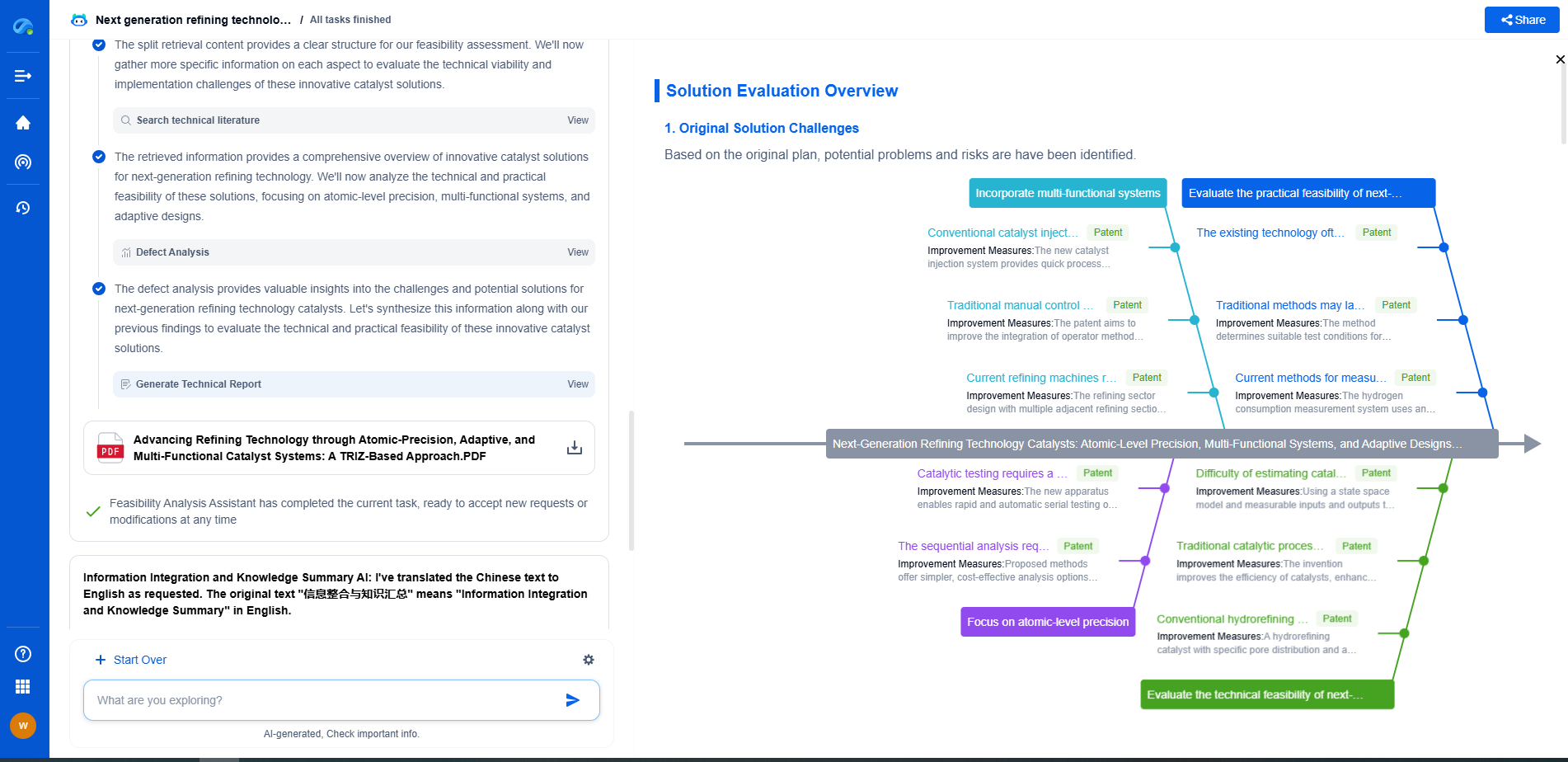Wired vs wireless control for next-gen robotic systems
JUN 26, 2025 |
As robotics technology continues to advance at a rapid pace, the perennial debate between wired and wireless control systems becomes increasingly relevant. Each approach has its unique benefits and drawbacks, and the choice largely depends on the specific requirements and goals of the robotic system in question. This article explores the intricacies of both wired and wireless control, examining their applications, performance, and future implications for next-generation robotic systems.
The Basics of Wired Control Systems
Wired control systems have long been the staple for many robotics applications, primarily due to their reliability and consistent performance. By using physical connections like cables and connectors, wired systems ensure a stable communication link between the controller and the robot. This stability is crucial in environments where interference might otherwise disrupt wireless signals.
Wired systems are typically favored in industrial settings where robots are required to perform repetitive tasks with precision. The direct connection minimizes latency, ensuring that commands are executed in real-time. Moreover, the absence of wireless transmission means that wired solutions are less susceptible to hacking or unauthorized access, providing an additional layer of security.
However, wired systems are not without their limitations. The physical constraints imposed by cables can limit the mobility and flexibility of robots. In dynamic environments where robots need to move freely, the tethering nature of wired connections can be a significant disadvantage, often requiring complex cable management solutions.
Exploring Wireless Control Systems
Wireless control systems offer a significant leap in flexibility and adaptability for robotic systems. By eliminating physical connections, wireless solutions allow for greater mobility and ease of deployment. This is particularly advantageous in applications such as autonomous vehicles, drones, and exploratory robots, where movement in unpredictable environments is essential.
The use of wireless communication technologies like Wi-Fi, Bluetooth, or proprietary radio frequencies allows these systems to operate over large distances, providing a broader range of operation compared to wired systems. Additionally, wireless systems are easier to scale, making them ideal for projects that require the coordination of multiple robots or systems within a single network.
Despite these advantages, wireless systems are not without challenges. They are inherently more vulnerable to interference from other wireless networks or devices, which can lead to delays or loss of control. Additionally, security concerns are more pronounced in wireless systems, as signals can potentially be intercepted or jammed by malicious entities.
Performance Considerations
When evaluating wired versus wireless control for robotic systems, performance is a critical factor. Wired systems generally offer lower latency and higher reliability, making them suitable for applications where timing and precision are crucial. On the other hand, wireless systems provide greater operational flexibility, albeit sometimes at the cost of increased latency and potential signal interference.
Battery life and energy consumption also play a role in this decision. Wired systems can continuously supply power to the robot, while wireless systems rely on battery power, which may limit operational time and require efficient energy management strategies.
Future Trends and Innovations
The future of robotic systems is likely to see a convergence of both wired and wireless technologies, leveraging the best of both worlds. Advances in wireless technology, such as 5G and beyond, promise to reduce latency and improve reliability, potentially addressing many of the concerns associated with current wireless systems.
Simultaneously, innovations in wired connectivity, such as the development of more flexible and robust cabling solutions, will enhance the applicability of wired systems in environments where they were previously impractical.
Conclusion
The choice between wired and wireless control systems for next-generation robotic applications is not a one-size-fits-all decision. Each system offers distinct advantages and challenges, and the optimal solution depends on the specific requirements of the application. As technology continues to evolve, the gap between wired and wireless systems is likely to narrow, offering even more robust and versatile options for the robotics industry. Therefore, understanding the intricacies of each approach is essential for engineers and developers aiming to harness the full potential of robotic technology.
Ready to Redefine Your Robotics R&D Workflow?
Whether you're designing next-generation robotic arms, optimizing manipulator kinematics, or mining patent data for innovation insights, Patsnap Eureka, our cutting-edge AI assistant, is built for R&D and IP professionals in high-tech industries, is built to accelerate every step of your journey.
No more getting buried in thousands of documents or wasting time on repetitive technical analysis. Our AI Agent helps R&D and IP teams in high-tech enterprises save hundreds of hours, reduce risk of oversight, and move from concept to prototype faster than ever before.
👉 Experience how AI can revolutionize your robotics innovation cycle. Explore Patsnap Eureka today and see the difference.
- R&D
- Intellectual Property
- Life Sciences
- Materials
- Tech Scout
- Unparalleled Data Quality
- Higher Quality Content
- 60% Fewer Hallucinations
Browse by: Latest US Patents, China's latest patents, Technical Efficacy Thesaurus, Application Domain, Technology Topic, Popular Technical Reports.
© 2025 PatSnap. All rights reserved.Legal|Privacy policy|Modern Slavery Act Transparency Statement|Sitemap|About US| Contact US: help@patsnap.com

